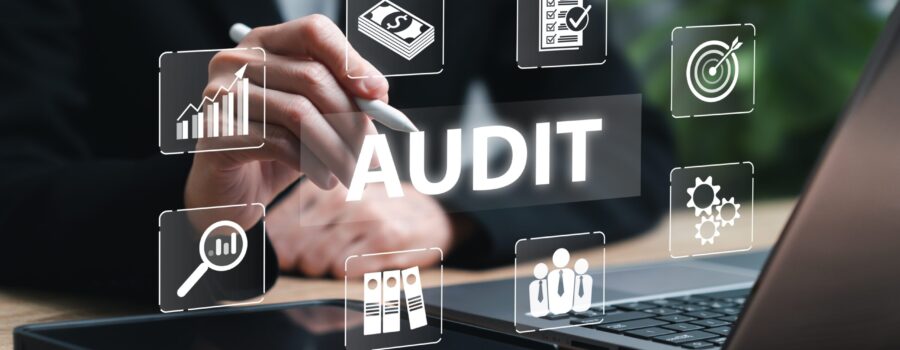Introduction: Remote ISO Audits aren’t going away
It’s important to learn how to prepare for remote ISO audits. In 2020, we all had to adapt to working remotely and communicating over email and video conferencing applications. This time created a shift in the way that remote work is perceived by most businesses, it became normal to operate remotely because it is more cost effective. So, remote assessments are not going away. Accreditation bodies and their customers have adapted to this new standard of communication, and you should as well.
Just to make sure I’m not misleading you. Most initial 17025 accreditation audits will be performed onsite, however there are circumstances where the initial accreditation is done remotely. This article is referring to renewal of ISO 17025 certificates, many times this is done remotely. Also, many ISO 9001 renewal audits are done remotely.
So, whether you’re currently ISO accredited or looking to implement an ISO standard, you better gear up for possible remote audits. Don’t make the mistake of assuming remote assessments are easier, they have potential to be more difficult. It really depends on the Auditor and how much the customer prepared for the audit.
What is a Remote ISO Audit?
A remote audit is exactly what it sounds like: your audit, but virtual. Instead of an assessor physically walking through your site, they review your documents, records, and sometimes even witness activities through video conferencing, screen sharing, file portals, and phone calls.
Most remote audits will take place on video conferencing applications like Zoom, Microsoft Teams, WebEx, or GoTo Meetings. The conference call will be the primary mechanism for communicating with auditors during remote ISO 17025 and ISO 9001 audits. The auditor will reach out throughout the day via email and phone calls in between video calls. It’s best to plan to be available to respond in a timely manner. Planning these small things are how to properly prepare for remote ISO audits.
How are remote ISO Audits different than onsite audits?
This is a good question, and really the whole point of the article. Preparing for a remote audit is similar to preparing for an onsite one. There are differences in the strategies for both kinds of audits.
The main difference between a remote ISO 17025 or ISO 9001 audit and an onsite one is that the auditor will schedule breaks between video sessions. This means they have completely uninterrupted time to review your documents with no distractions. So, for some requirements of the standard they might be looking at your documentation and evidence more closely than they would be if they were onsite.
It’s true that some remote assessments are far easier than some onsite ones. Like I said before, it really depends on the auditor and how well you prepared everything for them.
How to Prepare for Remote ISO Audits (without losing your mind)
The first thing to do is to make sure you upload and complete all the required documentation the assessment body asks for prior to the audit. This may seem simple, but it’s very common for companies to wait for the last minute and miss things that were required upfront.
In addition to having your pre-assessment documents in order, you will want to have all your records easily accessible on the day of the audit. They will be asking for things that aren’t included in the pre-assessment documents and producing these documents immediately upon request will make the audit way smoother. Taking too long to find something will only annoy the auditor, and it shows them that your record management system isn’t as good as it should be. Making sure the document management system is updated, and everything is accessible immediately will help the auditor.
Remember the easier you make the auditors job, the easier your assessment. When we ask ourselves, how to prepare for remote ISO audits, just remember that the goal is to make the auditors job super easy that day.
Some other considerations with remote audit preparation are setting up the communication tools and making sure you have the day blocked off to just focus on the audit. If there are any key team players that need to be involved in the audit, it would be wise to clear their schedule that day as well. It’s a couple of days out of the year, so make sure to plan accordingly so a clear schedule is realistic.
Back to the communication tools. Make sure to be familiar with the video conferencing tool the auditors are using. Make sure to log in and test your audio and video. Don’t make the auditor sit through troubleshooting. Also, make sure you can access the meeting with cellular data just in case the Wi-Fi connection goes bad. Having a backup will put everyone at ease.
ISO Audit Pro Tip
Following your implemented quality policies regularly is the best way to prepare for audits. That removes all the last-minute cramming. Your QMS is not a static object, it needs to have daily attention and upkeep. Audits will be easier when you regularly attend to your QMS.
Other ISO 17025 and ISO 9001 remote audit day steadies to consider
Make sure your team is as free as possible for the audit days, that is crucial. I highly recommend using a conference room or shared space where your team is all together. Teamwork is key to successful audits. You need to work together to quickly pull requested documentation. Have all the appropriate team members present to answer questions.
Another good idea is to try and encourage the auditor to break the video sessions up appropriately. Going all out on a zoom call for 8 hours is far less productive than breaking it up into 3 different blocks of time. Don’t be afraid to make requests about the timing of the meetings. You are their client, and they will likely be a little bit flexible to accommodate reasonable requests for time structure.
A note for ISO 17025 virtual audits specifically
The auditor will perform remote witness calibration or testing procedures. Make sure you have a tripod, or someone to hold a camera while the technicians are performing their work. This makes this part much easier. Keep in mind the auditors extensive experience when they are witnessing, they know what to look for, and what to ask about, even on camera. For example, if you are performing a pressure gauge calibration, they will be making sure to ask if you are taking it to full capacity prior to taking measurements. So, make sure technicians are following their testing or calibration procedures.
Also, make sure the lab is using standards that aren’t past their calibration interval. They will check for traceability and all the calibration or testing reports you generate during virtual assessments. So, make sure your equipment or certified reference materials are current and fit for use.
Final Word: Remote Doesn’t Mean Relaxed
Just because the auditor isn’t breathing down your neck in person doesn’t mean they’re not watching carefully. Remote audits can be rigorous. How you prepare for the ISO remote audit is going to dictate your experience and the auditors on the day of.
But if you prepare smart, communicate clearly, and organize your system like a pro…
You’ll come out ahead—no travel hangover required.
Need Help Getting Ready?
Whether it’s your first remote audit or your fifth, I help labs and businesses optimize their QMS, prep documentation, and run mock audits so nothing gets missed.
Schedule a Free Consult





Leave a Reply
Your email is safe with us.